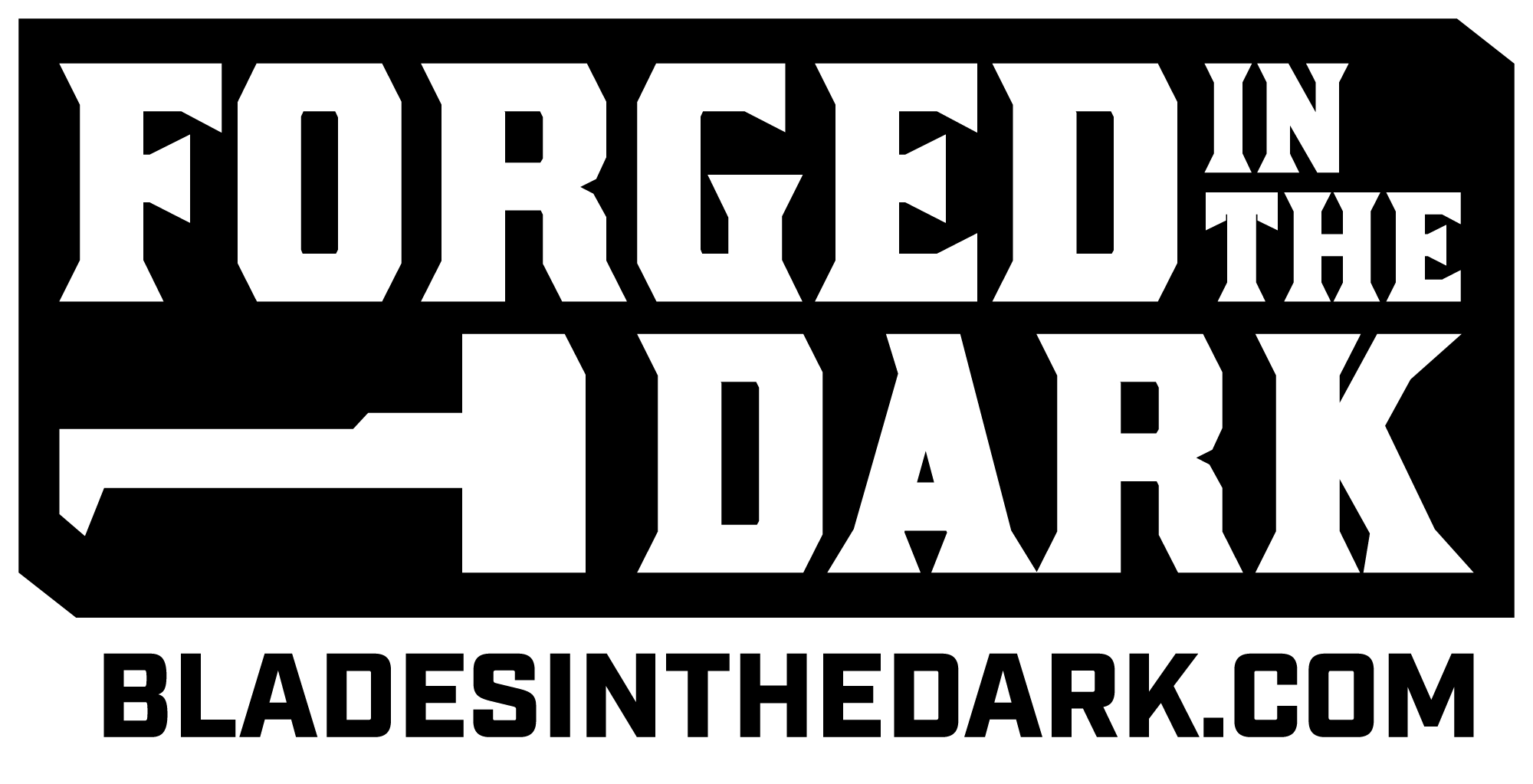Downtime Activities 
Between missions, your crew spends time at their liberty, attending to personal needs and side projects. These are called downtime activities (see the list below). During a downtime phase, each agent who went on the primary mission has time for one downtime activity unless the Quartermaster assigns them to a crew activity.
- Acquire Asset
- Long-Term Project
- Recover
- Reduce Heat
- Train
- Seek Stability
You can only attempt actions that you’re in a position to accomplish. If an activity is contingent on another action, resolve that action first.
A PC can make time for more than two activities, if the Director agress to pay the cost. Each additional activity from the list costs 1 intel. This reflects the extra time and resources you’re drawing upon. When you complete a new mission, you reset and get one “free” activity again.
Activities on the downtime list are limited; normal actions are not. During downtime, you can still go places, do things, make action rolls, gather information, talk with other characters, etc. In other words, only activities that are on the list are limited.
For any downtime activity, take +1d to the roll if a friend or contact helps you. After the roll, you may ask the Director to spend intel after the roll to improve the result level. Increase the result level by one for each intel spent. So, a 1-3 result becomes a 4 or a 5, a 4/5 result becomes a 6, and a 6 becomes a critical.
GM: If a player can’t decide which downtime activity to pick, offer them a long-term project idea. You know what the player is interested in and what they like. Suggest a project that will head in a fun direction for them.
“Remember how you had that weird vision at the altar to the forgotten gods? Yeah, do you want to get to the bottom of that? Okay, start a long-term project—six segments—called… ‘Weird God Vibes.’ What do you do to work on that?”
Acquire asset
Gain temporary use of an asset:
- One special item or set of common items (enough for everyone on the mission).
- A cohort (an expert or squad).
- A vehicle.
- A service. Transport from a smuggler or driver, use of a warehouse for temporary storage, legal representation, etc.
“Temporary use” constitutes one significant period of usage that makes sense for the asset—typically the duration of one mission. An asset may also be acquired for “standby” use in the future. You might hire a squad to guard your headquarters, for example, and they’ll stick around until after the first serious battle, or until a week goes by and they lose interest.
To acquire the asset, describe the steps you take and roll one of your actions. The result indicates the quality of the asset you get. 1-3: Poor, 4/5: Standard, 6: Fine, critical: Exceptional. You can spend intel to raise the result of this roll.
The GM may set a minimum quality level that must be achieved to acquire a particular asset. For example, if you want to get a set of MI6 uniforms and access credentials, you’d need to acquire an exceptional asset. A lower result won’t do.
If you acquire the same asset again, you get +1d to your roll. If you continue to re-acquire an asset every time it’s used, you can effectively rent it indefinitely.
Alchemicals, poisons, bombs, and dangerous gadgets are highly restricted. When you acquire one of these items (rather than crafting it yourself), you take +2 heat.
If you want to acquire an asset permanently, you can either gain it as a crew upgrade or work on it as a long-term project to set up a permanent acquisition.
Zamira is a duelist in the Iruvian style, and would like a fine sword to add to her permanent items. Her player starts a long-term project: “Get My Family Sword Back from the Pawn Shop.” The GM says this is an 8-clock (she can work on it by Consorting or Swaying the pawn shop owner or maybe making Fortune rolls to represent small payments).
Long-term project
When you work on a long-term project (either a brand new one, or an already existing one), describe what your character does to advance the project clock, and roll one of your actions. Mark segments on the clock according to your result: 1-3: one segment, 4/5: two segments, 6: three segments, critical: five segments.
A long-term project can cover a wide variety of activities, like doing research into an arcane ritual, investigating a mystery, establishing someone’s trust, courting a new friend or contact, changing your character’s source of stability, and so on.
Based on the goal of the project, the GM will tell you the clock(s) to create and suggest a method by which you might make progress.
In order to work on a project, you might first have to achieve the means to pursue it—which can be a project in itself. For example, you might want to make friends with a member of the City Council, but you have no connection to them. You could first work on a project to Consort in their circles so you have the opportunity to meet one of them. Once that’s accomplished, you could start a new project to form a friendly relationship.
Recover
When you recover, you seek treatment and heal your harm. You might visit the hospital, hole up in a safe house with a contact trained in first aid, or seek out a scientist or magician to deal with exotic maladies. If you don’t have a contact or fellow PC who can provide treatment, you can use the acquire asset activity to gain access to a doctor or nurse, who can provide service for the whole crew.
Recovery is like a long-term project. Your healer rolls (Tinker for a PC with the Physician special ability or the quality level of an NPC) and then you mark a number of segments on your healing clock. 1-3: one segment, 4/5: two segments, 6: three segments, critical: five segments.
When you fill your healing clock, reduce each instance of harm on your sheet by one level, then clear the clock. If you have more segments to mark, they “roll over.”

Cross has two injuries: a level 3 “Shattered Right Leg” and level 1 “Battered.” During downtime, he gets treatment from Quellyn, a nurse friendly with the crew’s Adept. Quellyn is a competent healer, so the GM says quality 2 makes sense. The player rolls 2d to recover and gets a 6: three segments on the healing clock. He asks the Director to spend 1 intel to improve the result to a critical to get five segments instead. Four segments fill the clock—all of Cross’s harm is reduced by one level, then he clears the clock and marks one more segment. His level 3 harm “Shattered Right Leg” is reduced to level 2 harm. His level 1 harm “Battered” is reduced to zero and goes away. Cross is left with one injury on his sheet: level 2 “Broken Leg.”
You may heal yourself if you have the Physician special ability, but you take 2 stress when you do so. You can also choose to simply tough it out and attempt to heal without any treatment—in this case, take 1 stress and roll 0d.
Note that it’s the recovering character that takes the recovery action. Healing someone else does not cost a downtime activity for the healer.
Whenever you suffer new harm, clear any ticks on your healing clock.
Reduce heat
Say what your character does to reduce the heat level of the crew and make an action roll. Maybe you Consort with your friend who’s a officer and she arranges for a few incriminating reports to disappear. Or maybe you Command the fear of the local citizens so they’re afraid to snitch.
Reduce heat according to the result: 1-3: one, 4/5: two, 6: three, critical: five.
Train
When you spend time in training, mark 1 xp on the xp track for an attribute or playbook advancement. If you have the appropriate crew Training upgrade unlocked, mark +1 xp (2 total). See Crew Upgrades. You can train a given xp track only once per downtime.
Seek stability
Visit your source of stability to relieve stress.
